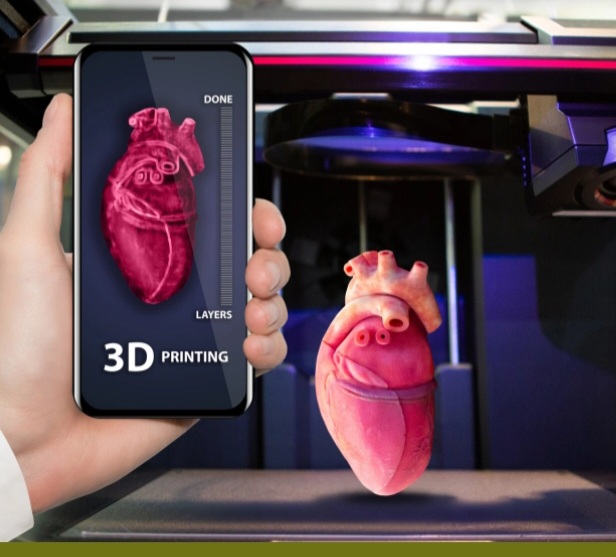Artificial organs could change the world
Organoid- Organoid heart 3D printing
December 12, 2022
As time has progressed humans have found many ways to test products, vaccines, or even testing if chemicals were deadly to humans. First, people conducted experiments directly on humans. After that, humans began conducting experiments on animals, whether that’s for beauty products, effects of hazardous conditions, cancer cures, vaccines, and many others. Now, an advancement in science has occurred that can pave the way for many more scientific breakthroughs that will change the world. This advancement is organoid, simply Organoids are small versions of organs created in laboratories.
In a more complex explanation, the whole process begins with skin stem cells. After this, the stem cells are treated with the right combination of molecules in the right order. This causes the different cell types needed to form the appropriate organ systems for the certain organ needing to be created. After that, the cells will then self-organize into 3D models of the organs. These organs will then act and function in the same way that the natural organs would function.
Organoids have been around since 2010 and in the past 12 years, the process of creating organoids has advanced a lot. These organoids are then used to test the way diseases affect organs. For example, lung and brain organoids are created and then placed in Petri dishes in laboratories across the world. These organoids are then introduced to some of the Covid-19 diseases, and after that, the effects of the disease on the organoids are studied. These experiments are used to determine how Covid-19 affects the organs, so scientists can figure out how to help cure the disease. Along with this, organoids can be used for many other benefits. After years of advancements, organoids can be created at much larger sales, and this could be used to help produce replication of organs needed to perform life-saving surgery. This could lead to a higher success rate in organ transplants. Along with that, who knows, in the future, we could use organoids to create our very own Frankenstein.


